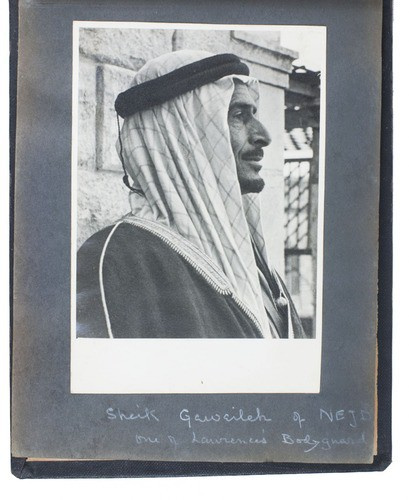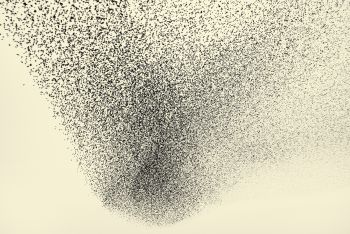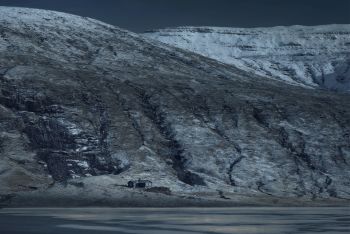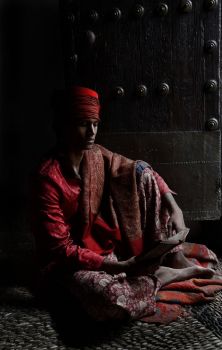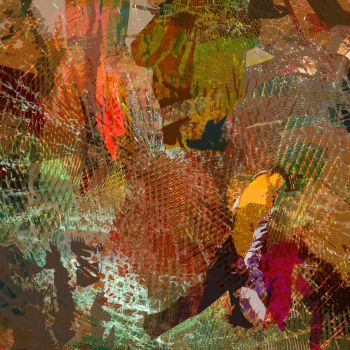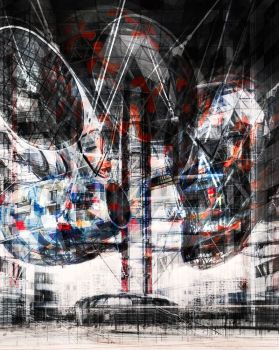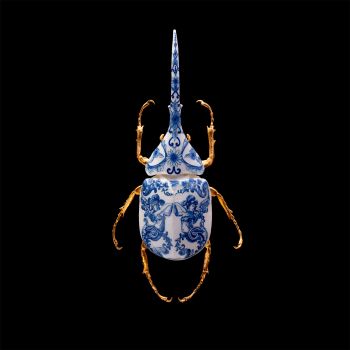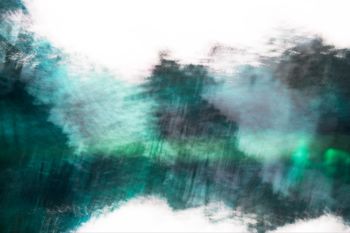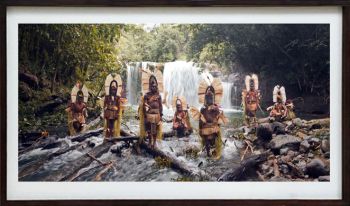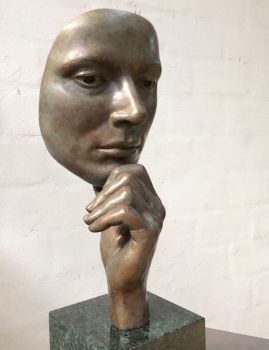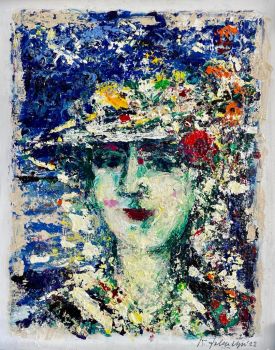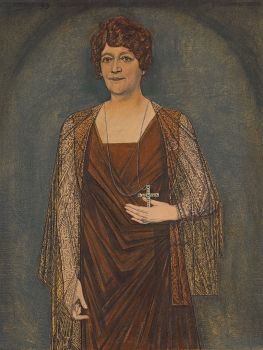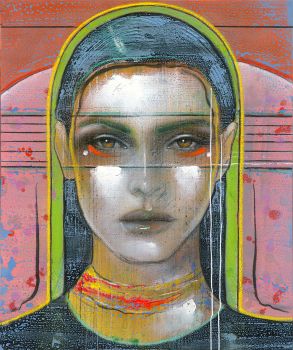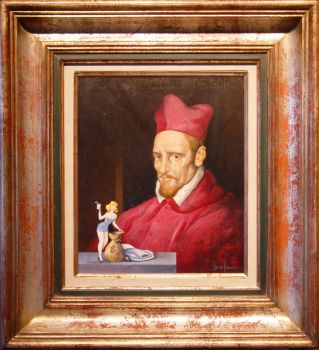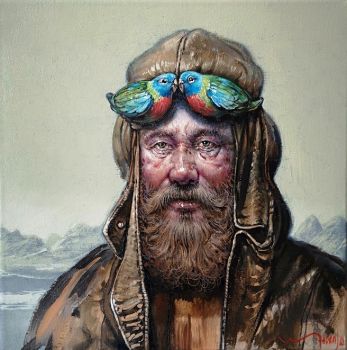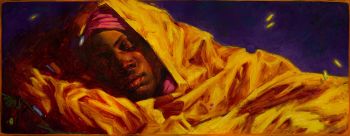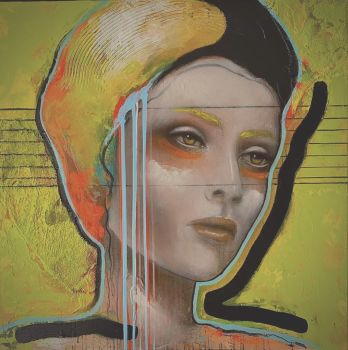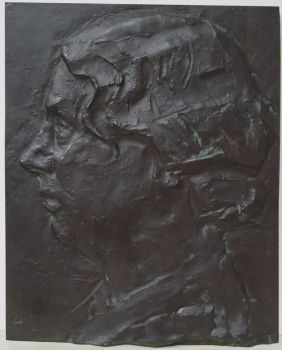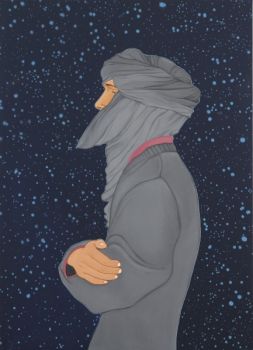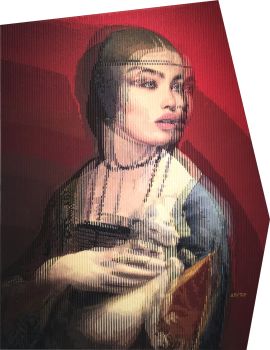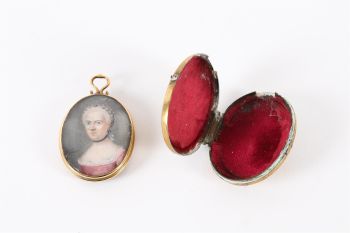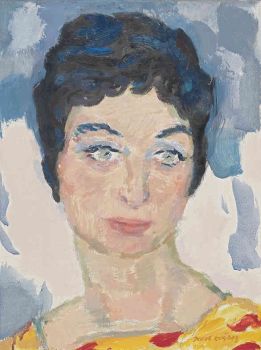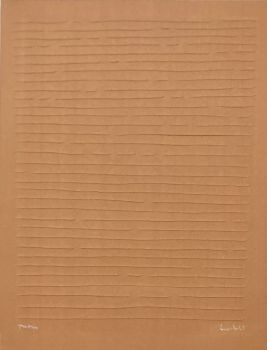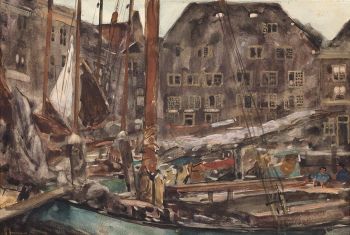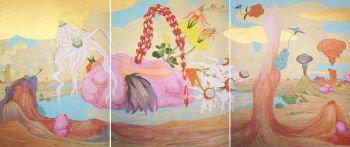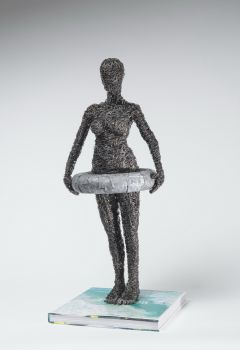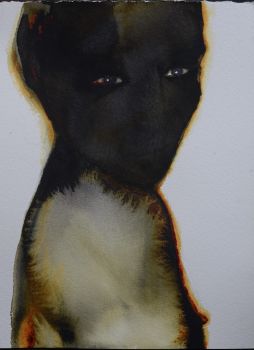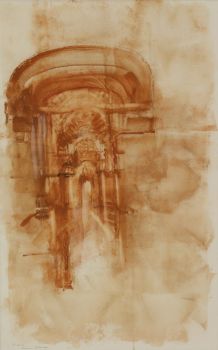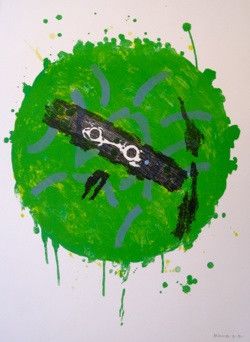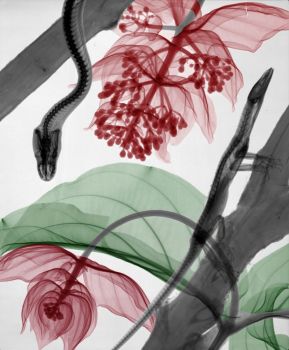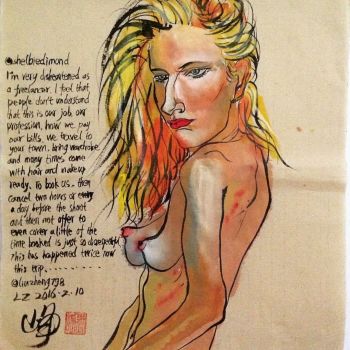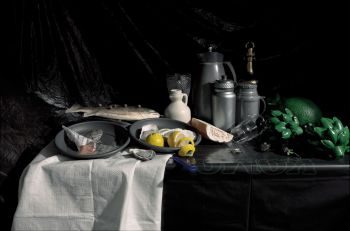14 photographic portraits of sheiks & tribesmen, by Lawrence of Arabia's Chief of Staff 1920
Walter Francis Stirling
PapelImpressão fotográfica
17 ⨯ 12 cm
Atualmente indisponível via Gallerease
- Sobre arteArab Types.
Syria, [ca. 1918-ca. 1921]. Oblong album (18 x 26 cm). An album containing 14 black and white photographic portraits (mostly about 17 x 12 cm) plus a smaller print of one. Mounted in a ca. 1930 album of black paper leaves (boards covered with black cloth).
Fascinating collection of 14 photographic portraits showing 13 sheikhs and tribesmen from several tribes in and around Syria, all with captions that usually give the subject's name and tribe. The photos, often highly expressive profile studies, were taken and assembled by Lt. Col. Walter Francis Stirling (1880-1958), T. E. Lawrence's Chief of Staff in 1918. The named tribes are the Shammar (nomadic Bedouins in northern Arabia, Syria and Iraq), Ruwalla (semi-nomadic Bedouins led by the Sha'lan family, also in northern Arabia and Syria), Hadidiyin (nomadic Bedouin sheep herders in Syria and northern Iraq), Walda (Kurds in Syria), Yazidis (Kurds in northern Iraq), Agaidat (Beduoins in Syria) and "Abu Klamin"[?] (not identified). The best known subjects are Fawaz al Sha'lam, Emir of Ruwalla (grandson of Nuri Sha'lan (1847-1842!), who commanded a large portion of the troops that entered Damascus with Faisal in 1918) and Daham al-Hadi, Sheikh of the Shammar. The latter is described as "Paramount Sheikh"of the Shammar (in Iraq), a title granted him by the British in 1920 that he lost when Faisal became King of Iraq in 1921.
One photograph slightly damaged, mostly outside the image area, but further in very good condition, with only an occasional small surface scratch or spot. Rare photographic portraits of sheiks and tribesmen in T.E. Lawrence's Damascus circle of friends and enemies. - Sobre artistaWalter Francis Stirling (1880-1958) era um oficial do exército, nascido em Southsea em 31 de janeiro de 1880. Ele era o único filho e filho mais novo do Capitão Francis Stirling RN e sua esposa, Mary Caroline. Ele serviu em substituição de Ladysmith, na ação em Laing's Nek e nas operações na Colônia do Rio Orange e no Transvaal na Guerra dos Bôeres. Em 1906, ele foi destacado para o exército egípcio e passou cinco anos com um batalhão árabe nas fronteiras da Eritreia e da Abissínia. Na Primeira Guerra Mundial, ele serviu em Gallipoli no Egito e na campanha palestina até ser nomeado oficial-chefe de Lawrence. Em 1919, foi conselheiro do Emir Feisal e Vice-Político Oddicer no Cairo, então governador em exercício do Sinai e governador do distrito de Jaffa na Palestina. Em 1923 ele se tornou conselheiro do Rei Zog I. Ele colaborou com Alexander Korda em um filme chamado Sete Pilares da Sabedoria. Na Segunda Guerra Mundial, ele serviu em Damasco, tornando-se correspondente do The Times. Ele sobreviveu a uma tentativa de assassinato em 1949.
Artwork details
Categoria
Assuntos]
Material e Técnica
Cor
Related artworks
- 1 - 4 / 24
Mary Alacoque Waters
'Woman with white Headdress’ after Vermeer1996 - 2006
Preço em pedidoGalerie Mia Joosten Amsterdam
Lambertus Zijl
Portrait of Juliana, queen of the Netherlands (1948-1990)1900 - 1950
Preço em pedidoKunsthandel Pygmalion
1 - 4 / 24- 1 - 4 / 24

